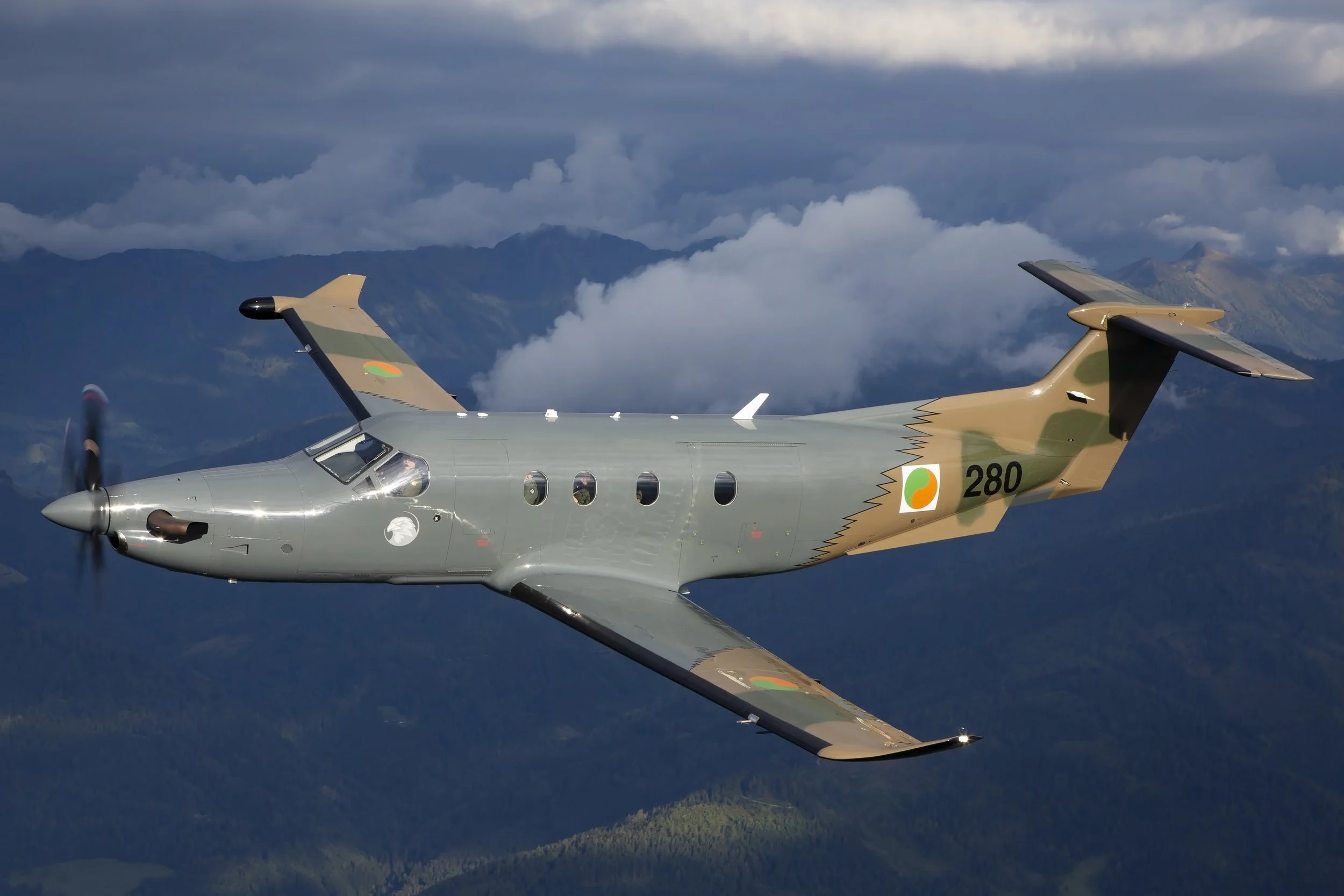
May 31 / Pilatus PC-12 first flight
First Flight 31 May 1991
Pilatus PC-12
The Pilatus PC-12 stands as a versatile and highly regarded turboprop aircraft that has made a significant impact in the aviation industry since its introduction. From its origins to its current status as a popular choice for various missions, the PC-12’s history showcases its evolution, capabilities, and enduring appeal.
Origins and Development (1991):
The Pilatus PC-12 traces its roots back to the early 1990s when the Swiss aircraft manufacturer Pilatus Aircraft Ltd initiated the development of a single-engine turboprop aircraft that could cater to a wide range of missions, including executive transport, cargo hauling, air ambulance, and regional airline operations.
The PC-12, designed by Pilatus Chief Designer Hansjörg Hunziker, was envisioned as a versatile and cost-effective aircraft that combined the performance of a turboprop with the operational flexibility of a business jet. Its robust construction, spacious cabin, and short takeoff and landing capabilities set it apart in the market.
Maiden Flight and Certification (1991-1994):
The first prototype of the Pilatus PC-12 conducted its maiden flight on May 31, 1991, marking the beginning of an extensive flight test program to validate its performance, handling characteristics, and systems integration. The aircraft received certification from aviation authorities in Switzerland and the United States in 1994, paving the way for its entry into service.
Operational Debut and Market Success:
The Pilatus PC-12 entered commercial service in 1994, garnering immediate interest from operators seeking a versatile and reliable aircraft for various missions. Its spacious cabin, impressive range, and ability to operate from short and unpaved runways made it a popular choice for corporate executives, regional airlines, government agencies, and air charter operators.
Continuous Improvements and Variants:
Over the years, Pilatus has introduced several enhancements and variants to the PC-12 lineup to meet evolving market demands and technological advancements. Variants such as the PC-12 NG (Next Generation) incorporated upgraded avionics, improved performance capabilities, and enhanced passenger comfort features.
Global Reach and Operational Versatility:
The Pilatus PC-12 has gained a strong foothold in the global aviation market, with operators utilizing it for a diverse range of missions, including executive transport, cargo operations, air ambulance services, aerial surveillance, and special missions. Its ability to adapt to different roles while maintaining efficiency and reliability has contributed to its widespread popularity.
Enduring Legacy and Industry Recognition:
The Pilatus PC-12 has earned a reputation for its exceptional performance, reliability, and operational versatility, solidifying its status as a benchmark in the turboprop segment. Its success in various markets and its continued relevance in the aviation industry underscore its enduring legacy and impact on modern aviation.
In conclusion, the Pilatus PC-12’s comprehensive history exemplifies its evolution from a concept to a highly sought-after turboprop aircraft known for its versatility, performance, and operational excellence. Its enduring appeal and continued relevance in diverse aviation sectors attest to its status as a true industry stalwart.
PC-12 Facts
Versatility: The Pilatus PC-12 is renowned for its versatility, capable of performing various missions including executive transport, cargo operations, air ambulance services, regional airline flights, and special missions.
Spacious Cabin: The PC-12 features a generous cabin space, accommodating up to nine passengers comfortably, making it popular among operators seeking a balance of passenger comfort and operational flexibility.
Short Takeoff and Landing (STOL) Capabilities: The PC-12’s design allows it to operate from short and unpaved runways, expanding its accessibility to remote locations and increasing its utility for operators in challenging environments.
Turboprop Power: Powered by a single Pratt & Whitney Canada PT6A turboprop engine, the PC-12 delivers reliable performance, fuel efficiency, and the ability to cruise at speeds of up to 280 knots (322 mph).
Range: The PC-12 has an impressive range of over 1,500 nautical miles, enabling operators to conduct long-haul flights efficiently and effectively, whether for business travel or humanitarian missions.
Glass Cockpit: The PC-12 is equipped with advanced avionics and a modern glass cockpit, providing pilots with intuitive controls, enhanced situational awareness, and the latest in-flight technology for safe and efficient operations.
High Altitude Performance: The PC-12 is known for its exceptional high-altitude performance, allowing it to operate comfortably in mountainous regions and challenging terrain, making it a popular choice for operators in rugged environments.
Cargo Door: The PC-12 features a large cargo door, facilitating easy loading and unloading of bulky or oversized cargo, further enhancing its utility for freight operations and specialized missions.
Reliability: Pilatus aircraft, including the PC-12, are recognized for their robust construction, durability, and reliability, ensuring operators can depend on the aircraft for consistent performance and mission success.
Popular Choice: The Pilatus PC-12 has garnered widespread popularity among operators worldwide, earning a reputation for its exceptional capabilities, operational flexibility, and cost-effectiveness, solidifying its position as a leading turboprop aircraft in the aviation industry.













